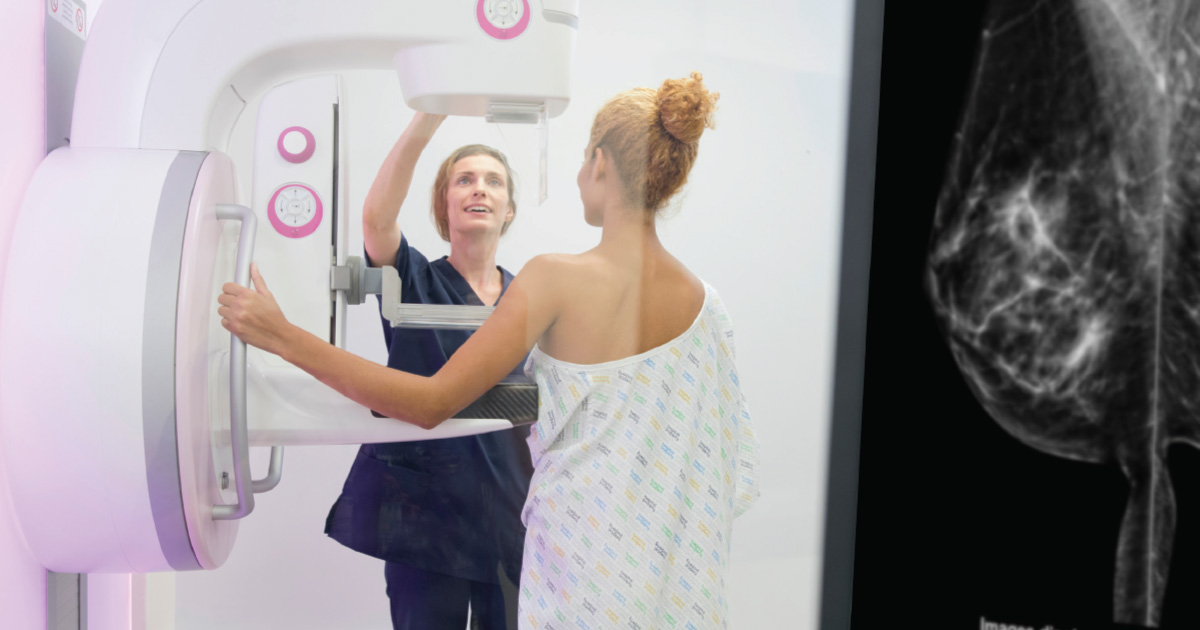
Breast Health, Cancer
Breast Cancer Awareness
Breast Cancer Awareness
October is National Breast Cancer Awareness Month, and with the American Association of Cancer Research & National Cancer Institute projecting more than 268,000 diagnosed cases in 2019 in the U.S. alone, there’s never been a better time to examine the risk factors, prevention measures, and treatment options.
Did you know?
- 1-in-8 women born in the US today will get breast cancer at some point
- Breast cancer is the 2nd leading cause of cancer death in women
- Risk is nearly doubled for those with a first-degree relative who has been diagnosed with breast cancer
The statistics are clear—this disease is all too prevalent and will unfortunately take the lives of more than 40,000 women and men this year. So, how can you avoid becoming one of these statistics? Education, self-awareness, and communication with your doctor are your best chance at prevention.
What Causes Breast Cancer?
As with many forms of cancer, the causes remain largely unknown. While the body of research continues to evolve, research suggests that a combination of genetic and environmental factors are at play in the appearance of the disease. Though not a comprehensive list, the following factors appear to increase the risk of developing breast cancer:
- Family History – Having a first-degree relative who has been diagnosed with breast or ovarian cancer significantly increases risk—especially if they were diagnosed before they were 50 years old.
- Alcohol Consumption & Smoking – Multiple studies have shown that the risk of developing breast cancer increases 7%-10% for each alcoholic drink consumed per day—meaning those who imbibe two or three alcoholic beverages per day have a 20% increased risk compared with non-drinkers. A growing body of research also indicates that smoking significantly increases risk, particularly in long-term, heavy smokers, or those who started smoking prior to their first pregnancy.
- Obesity – Overweight women have approximately a 1.5x higher risk of developing cancerous cells, and women struggling with obesity have an approximately 2x increase in risk compared with lean women.
- Exercise – With what we now know about the effect of obesity, it makes sense that evidence shows women who get regular physical activity see a 10%-25% lower risk compared to women who are inactive.
- Age – As women age, the risk increases—with the National Breast Cancer Foundation suggesting that “two out of three women with invasive cancer are diagnosed after age 55.”
- Dense Breast Tissue – Having dense breast tissue not only makes detection more challenging, but also has been tied to increased risk. During your annual mammogram, your doctor will discuss with you whether your breast tissue density is a concern.
- Reproductive Factors – Having your first period before the age of 12, never having children/having them later in life, or starting menopause late (55 or older) have all been linked to the disease.
- Combined Hormone Replacement Therapy (HRT) – Participating in HRT, as happens with some menopause treatments, can increase your risk of developing the condition–as well as increasing the chance that it wouldn’t be detected until later stages.
Prevention & Detection
While this disease can manifest in a few different forms, the most commonly diagnosed is called ductal carcinoma, which often appears in or near a breast’s milk producing ducts. Other forms of the disease, though more rare, can affect both glandular tissue in both breasts, or present symptoms that make detection more challenging. This means that regular monthly self-examination of both breasts is your first line of defense.
So, what should you look for? The general signs and symptoms of this condition include:
- A lump or a thickness/density to the breast tissue which feels different compared with the surrounding breast tissue. It is important to note that ALL lumps should be investigated with your doctor, but not all lumps are cancerous.
- An unexplained difference in the texture, look, shape, or size of the breast
- A sudden change to the size, or an inversion of the nipple
- Changes appearing in the skin tissue of the breast such as dimpling, scaling, redness, or swelling
- Discharge or bleeding from the nipple or areola
While these general guidelines should help inform your self-exam, scheduling an annual clinical breast exam and mammogram is your best chance at detecting the various warning signs presented by different forms of the disease.
Diagnosis & Treatment
If your self-exam and/or mammogram indicates the appearance of concerning conditions, the next steps may include a diagnostic mammogram or 3D mammogram (Tomosynthesis) which provide a more detailed, layer-by-layer view of the breast tissue for fine detection. Additionally, your doctor may prescribe an ultrasound or MRI to build a more complete picture of the specific state of the affected tissue, and perhaps a biopsy of the affected area to allow for lab work to reinforce other diagnostic results.
If the disease is detected, treatment typically consists of a unique combination of radiation treatment, surgery, hormone therapy, chemotherapy, and targeted therapies such as pharmaceutical approaches to stifle the growth of breast cancer cells. Each of these treatments come with their own health concerns, so staying informed and connected to those you trust to help is critical to the overall success of the treatment.
The good news is that, when this condition is detected early, survival rates have been improving, with the average five-year survival rate for women currently at 90%, and ten-year survival rate at 83%. If you stay vigilant, stay informed, and stay connected to care, then your chances of avoiding, detecting, and surviving breast cancer are excellent.
Make every month breast cancer awareness month!
Are you due for your annual mammogram? Learn more about our breast health services and find an Axia Women’s Health mammography center near you.












